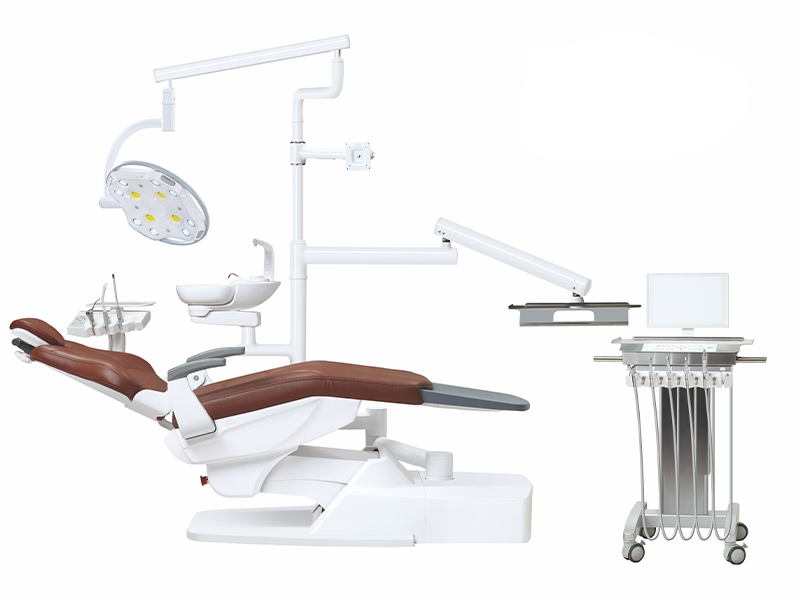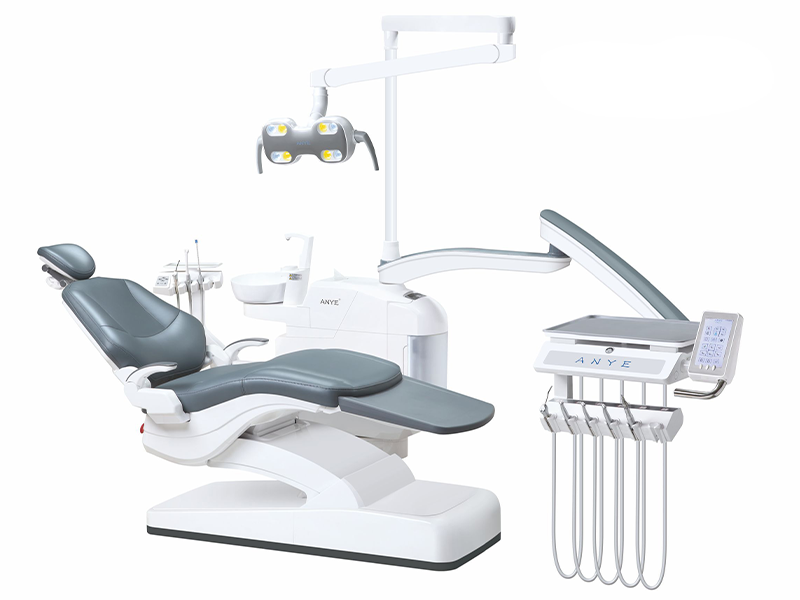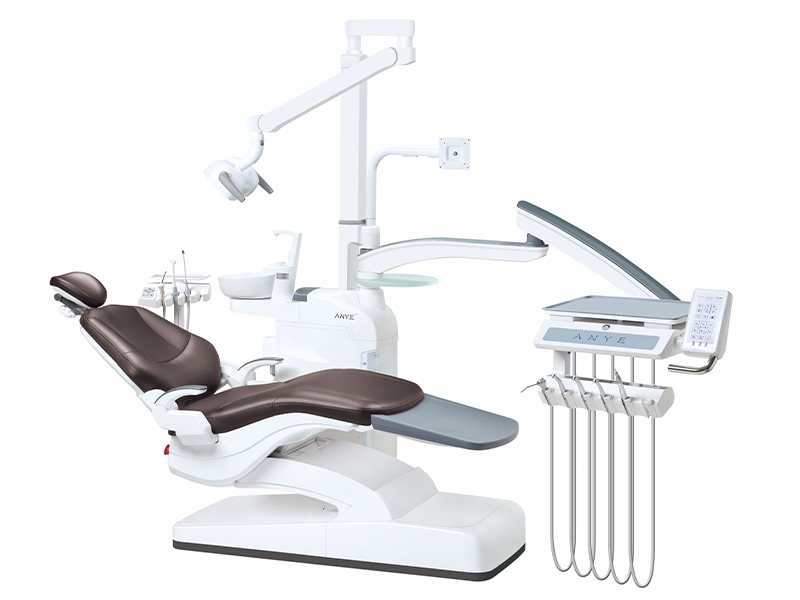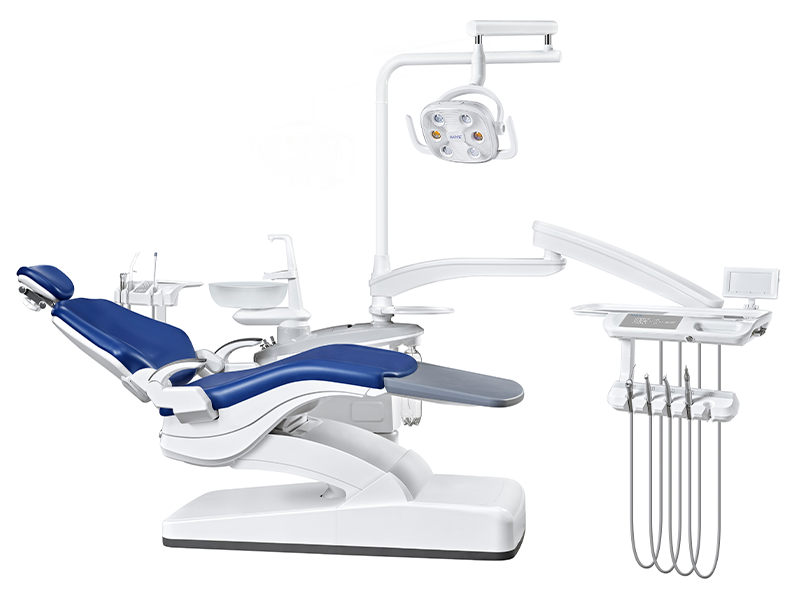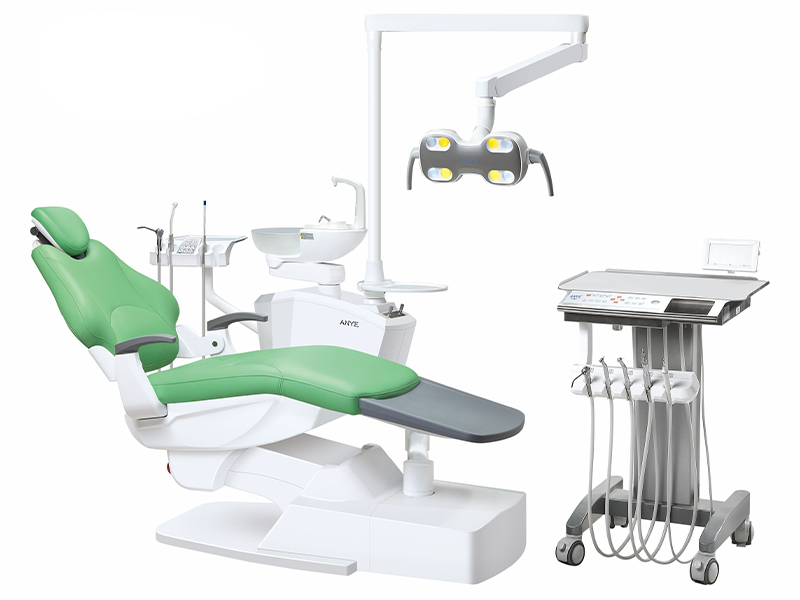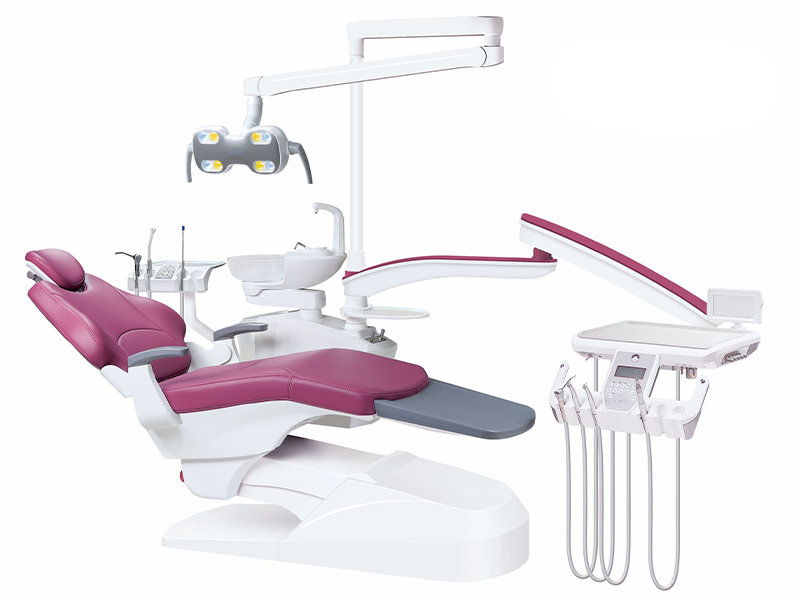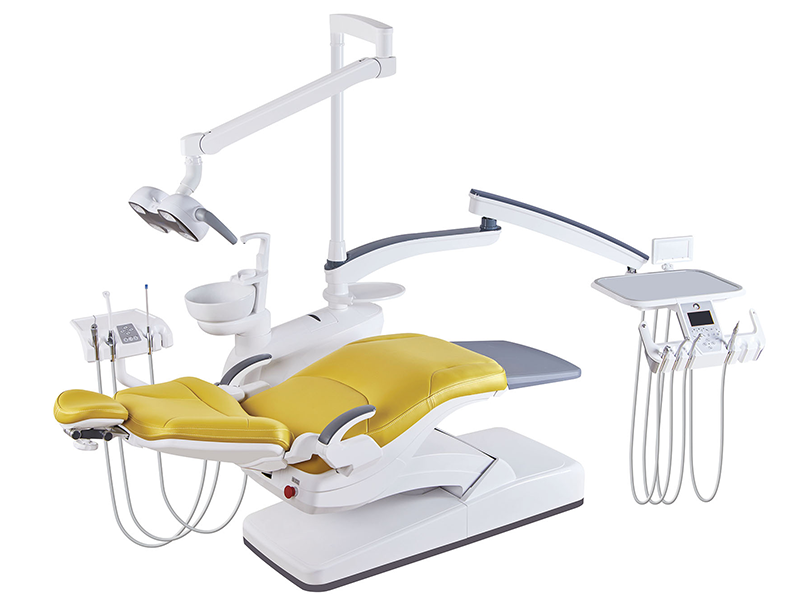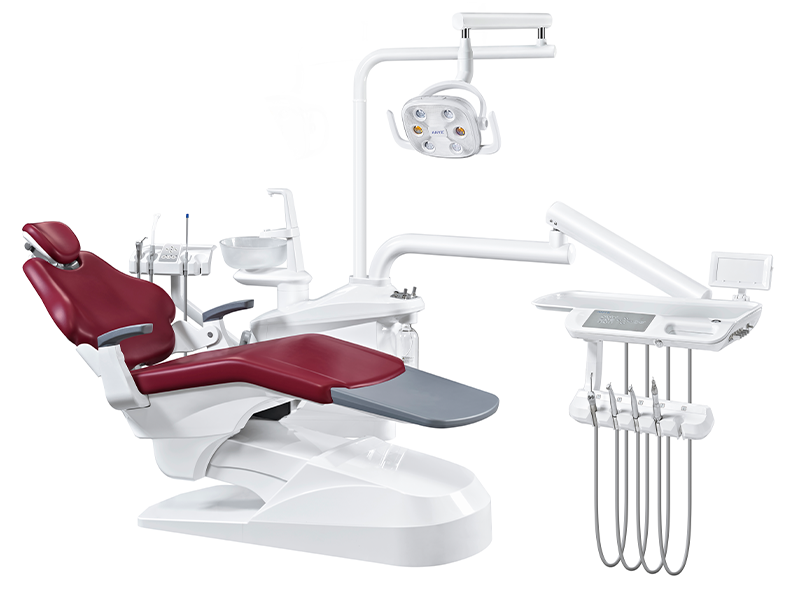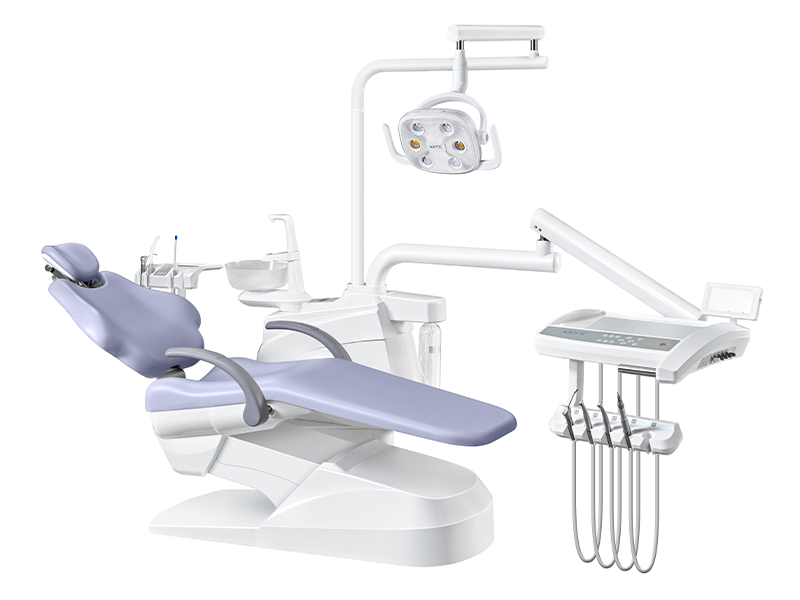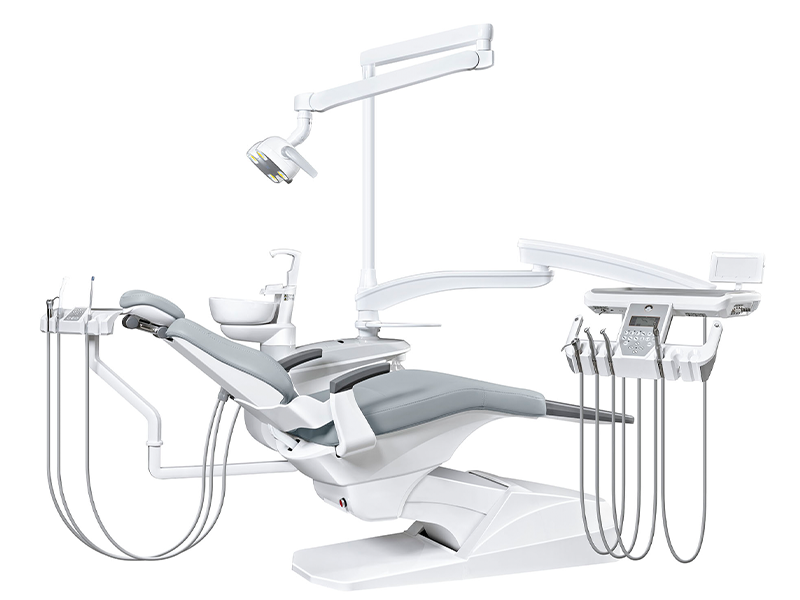Have you ever wondered why your dentist asks you to recline during treatment? The supine position, where you lie flat on your back in the dental chair, is more than just a comfortable pose—it’s a cornerstone of effective dental care. At Anye Dental, we understand how this position enhances both patient comfort and treatment precision, making it essential for everything from routine cleanings to complex procedures like root canals.
In this article, you’ll discover why the supine position is so crucial, how it improves access to your teeth and gums, and the role it plays in ensuring a seamless dental experience. We’ll also explore how Anye Dental’s ergonomic dental chairs, like the AY-215A1 and AY-215B2, are designed to support this position for maximum comfort and efficiency. Did you know that 85% of patients report feeling more relaxed when properly positioned in a dental chair? Let’s dive into how this simple adjustment can transform your dental visits—read on to learn more!
What Is The Supine Position Of A Dental Chair?
The supine position in a dental chair is a standard posture where the patient lies flat on their back, with their head slightly elevated and feet positioned lower. This setup is essential for most dental procedures, as it ensures optimal patient comfort and provides dentists with clear access to the oral cavity. By aligning the patient in this position, dental professionals can perform examinations and treatments more effectively, ensuring precision and efficiency.
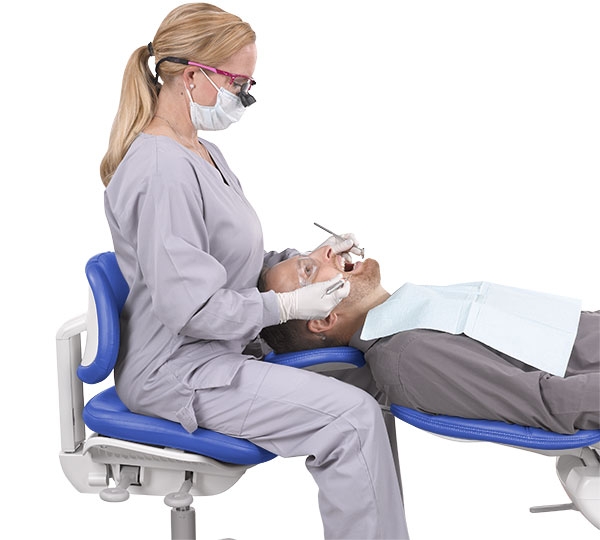
Why Is the Supine Position Important in Dentistry?
The supine position is a cornerstone of modern dental care. It allows dentists to maintain a clear line of sight into the mouth, which is critical for accurate diagnoses and treatments. For patients, lying flat reduces physical strain compared to sitting upright for extended periods. This position is particularly beneficial for procedures like cleanings, fillings, root canals, and oral surgeries, where precision and accessibility are paramount.
At Anye Dental, we prioritize patient comfort and treatment efficiency by incorporating ergonomic designs in our dental chairs, such as the AY-215A1 Implant Dental Unit, which supports optimal positioning for both patients and practitioners.
Key Benefits of the Supine Position
- Enhanced Visibility: Dentists can easily examine teeth and gums, identify issues, and perform treatments with greater accuracy.
- Improved Patient Comfort: Lying flat reduces tension and promotes relaxation, making lengthy procedures more tolerable.
- Optimal Access: Dentists can reach all areas of the mouth effortlessly, ensuring thorough cleanings and effective restorative work.
For example, during routine cleanings, hygienists use this position to remove plaque and tartar efficiently while keeping patients comfortable.
Common Uses of the Supine Position in Dentistry
The supine position is essential in various dental scenarios, including:
- Routine Check-ups: Enables comprehensive oral examinations.
- Dental Cleanings: Facilitates effective plaque and tartar removal.
- Restorative Procedures: Provides access for fillings, crowns, and other treatments.
- Endodontic Treatments: Allows dentists to access the tooth’s pulp chamber during root canals.
- Oral Surgeries: Ensures clear visibility and access for extractions or implant placements.
- TMJ Evaluations: Helps assess jaw movement and muscle function.
- Pediatric Dentistry: Creates a secure and comfortable environment for treating young patients.
While widely used, adjustments may be necessary for patients with specific medical conditions or procedural requirements. For instance, our AY-215B2 Dental Unit offers customizable positioning to accommodate diverse patient needs.
Ensuring Patient Comfort in the Supine Position
To maximize comfort and safety, dental professionals should:
- Provide Proper Head Support: Use headrests or cushions to maintain alignment and reduce strain.
- Communicate Openly: Discuss comfort levels with patients to alleviate anxiety.
- Adapt for Medical Conditions: Modify positioning for patients with health concerns, such as respiratory issues or back pain.
By prioritizing these factors, dental teams at Anye Dental can deliver a seamless and comfortable experience for every patient. Our AY-215C5 Implant Dental Unit features advanced ergonomic support to enhance patient comfort during procedures.
What Should Be Paid Attention To When The Patient Is In A Supine Position?
When a patient is in a supine position, ensuring their safety and comfort is paramount. This position, where the patient lies flat on their back, is widely used in medical and dental procedures. Below are essential considerations to enhance patient care during such treatments.
1. Proper Positioning for Comfort and Safety
Proper alignment of the patient’s head, neck, and body is critical to prevent strain or injury. Use supportive pillows to maintain a neutral neck position and padded armboards to avoid nerve compression. At Anye Dental, we prioritize ergonomic positioning to ensure patient comfort during lengthy procedures. For more insights on ergonomic dental chairs, explore our Dental Chair Ergonomics Guide.
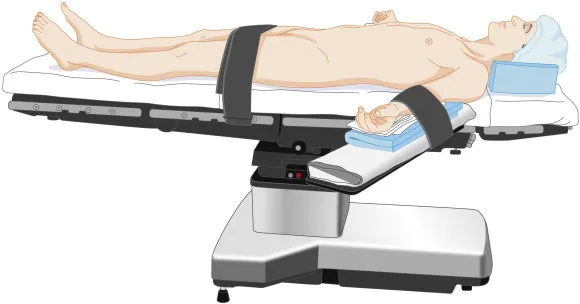
2. Effective Communication with Patients
Regularly check in with patients to address discomfort or concerns. Simple questions like, “How are you feeling?” or “Do you need any adjustments?” can significantly improve their experience. Clear communication fosters trust and reassurance throughout the procedure.
3. Managing Anxiety in the Supine Position
Many patients feel anxious when lying flat. Creating a calming environment—such as dimming lights or playing soothing music—can help ease their nerves. At Anye Dental, we also explain each step of the procedure to reduce anxiety and build confidence. Learn more about creating a relaxing environment in our article on Creating a Relaxing Dental Chair Environment.
4. Monitoring Vital Signs
Changes in blood pressure and circulation are common in the supine position. Regularly monitor these parameters, especially for patients with pre-existing conditions. Adjusting the patient’s position periodically can help maintain proper circulation and prevent complications.
5. Preventing Discomfort from Prolonged Reclining
Extended periods in the supine position can lead to pressure ulcers or discomfort. Use additional cushions or pillows for support and consider periodic position changes during longer procedures. Anye Dental’s team is trained to address these risks effectively. For more tips on patient comfort, check out our guide on How to Make Your Dental Chair More Patient-Friendly.
6. Ensuring Safety and Hygiene Standards
Strict adherence to safety protocols is non-negotiable. Use protective eyewear, gloves, and sterilized equipment to maintain high hygiene standards. At Anye Dental, we follow rigorous infection control measures to ensure patient safety. For detailed information on hygiene practices, visit our article on Infection Control in Dental Chairs.
By focusing on these key areas, healthcare providers can significantly improve the experience of patients in a supine position, ensuring both safety and comfort throughout their treatment journey.
When Is The Supine Position Usually Required?
What Is the Supine Position in Dentistry?
The supine position is a standard posture in dentistry where the patient lies flat on their back. This position is essential for providing dentists with optimal visibility and access to the oral cavity while ensuring patient comfort. It is widely used across various dental procedures to enhance precision and efficiency. At Anye Dental, our advanced dental chairs are designed to support this position seamlessly, ensuring both practitioner efficiency and patient comfort.
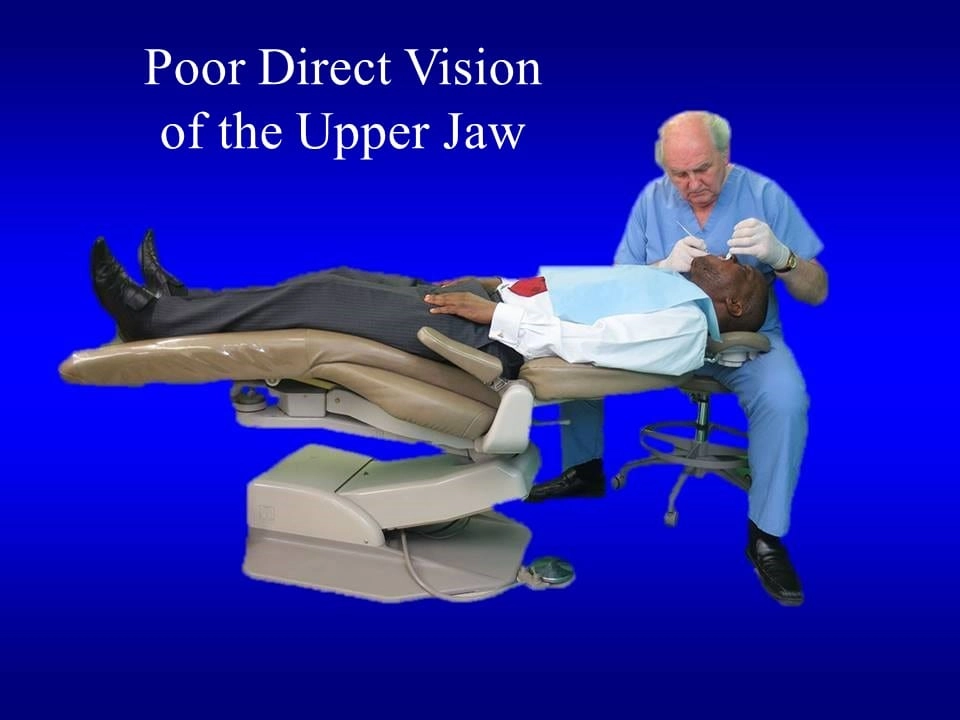
Common Dental Procedures That Require the Supine Position
The supine position is a cornerstone of dental care, enabling dentists to perform a wide range of treatments effectively. Below are the key procedures where this position is typically required:
-
Routine Dental Check-ups
During regular dental exams, patients are placed in the supine position. This allows dentists to thoroughly inspect teeth and gums, identify potential issues, and provide a comprehensive assessment of oral health. For example, our Dental Unit AY-215A2 is specifically designed to enhance patient positioning during routine check-ups. -
Dental Cleanings
Professional cleanings, such as scaling and polishing, often require patients to lie flat. This position helps dental hygienists remove plaque and tartar efficiently while ensuring preventive care measures are performed with precision. -
Restorative Procedures
Treatments like fillings, crowns, and bridges rely on the supine position for clear access to affected teeth. This ensures accurate preparation and restoration, leading to long-lasting results. Our Implant Dental Unit AY-215A1 is ideal for such procedures, offering superior ergonomics and accessibility. -
Endodontic Treatments
Root canal procedures necessitate the supine position to access the tooth’s pulp chamber and canals. This posture allows dentists to clean and seal the tooth effectively, alleviating pain and preventing further damage. -
Oral Surgeries
Surgical procedures, including tooth extractions and dental implant placements, often require the supine position. It provides surgeons with optimal access and visibility, ensuring safe and successful outcomes. -
TMJ Evaluations
Dentists may use the supine position to assess temporomandibular joint (TMJ) disorders. This posture facilitates evaluations of jaw movement and muscle function, aiding in accurate diagnosis and treatment planning. -
Pediatric Dentistry
When treating children, the supine position creates a secure and comfortable environment. It helps young patients feel at ease while allowing dentists to perform necessary treatments efficiently. Our Kids Dental Unit AY-215D2 is tailored for pediatric care, ensuring a positive experience for young patients.
Why Proper Positioning Matters in Dental Care
Proper positioning is critical for both patient comfort and treatment success. Dentists at Anye Dental tailor adjustments based on individual needs and specific procedures. For example, ensuring adequate head support helps maintain alignment and reduces discomfort during longer treatments. Learn more about the importance of ergonomic dental chairs in our article on Key Considerations for Ergonomic Dental Chairs.
Benefits and Challenges of the Supine Position
While the supine position offers numerous advantages, such as improved visibility and access, it may also pose challenges. For instance, some patients may experience respiratory discomfort due to intra-abdominal organ shifts. At Anye Dental, our professionals continuously monitor patient comfort to address any concerns promptly. Explore how our Disinfection Dental Unit AY-215B5 integrates advanced features to enhance patient safety and comfort.
Conclusion
If you’ve ever wondered how to make dental visits more comfortable for your patients, the supine position is your answer. At Anye Dental, we understand that patient comfort is just as important as clinical precision. Did you know that 85% of patients report reduced anxiety when positioned correctly during treatment? By allowing patients to lie flat on their backs with proper head support, you not only enhance visibility and access but also create a calming environment that fosters trust.
This article has explored how the supine position benefits both routine check-ups and complex procedures, while also highlighting the importance of ergonomic dental chairs like the AY-215A1 and AY-215C5 in achieving optimal results. Ready to transform your practice? Discover how Anye Dental’s innovative solutions can help you deliver exceptional care while keeping your patients at ease. Explore our range of ergonomic dental chairs and take the first step toward a more comfortable dental experience today!

